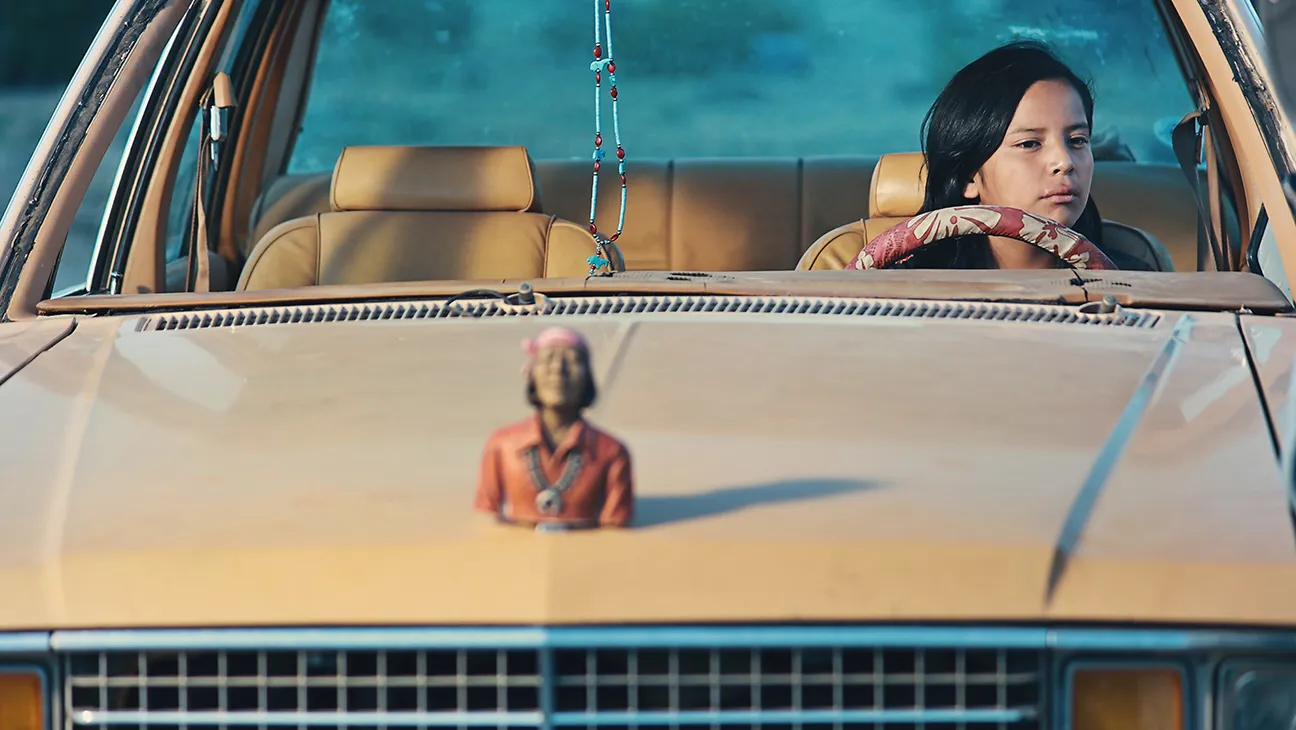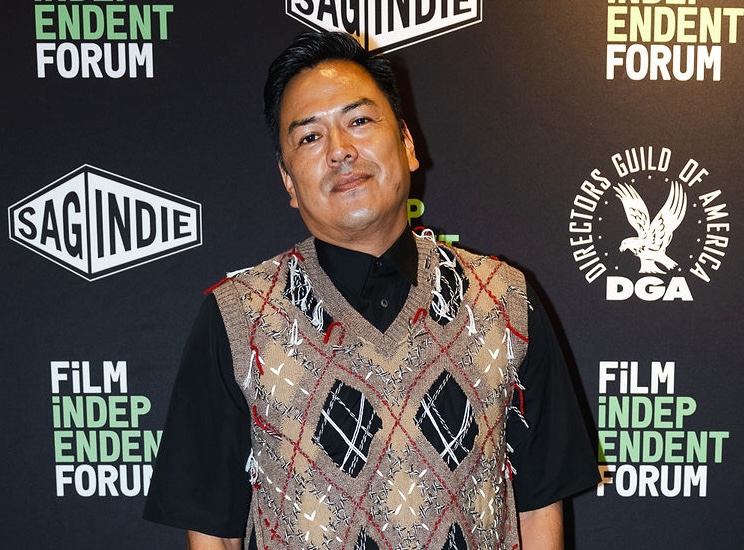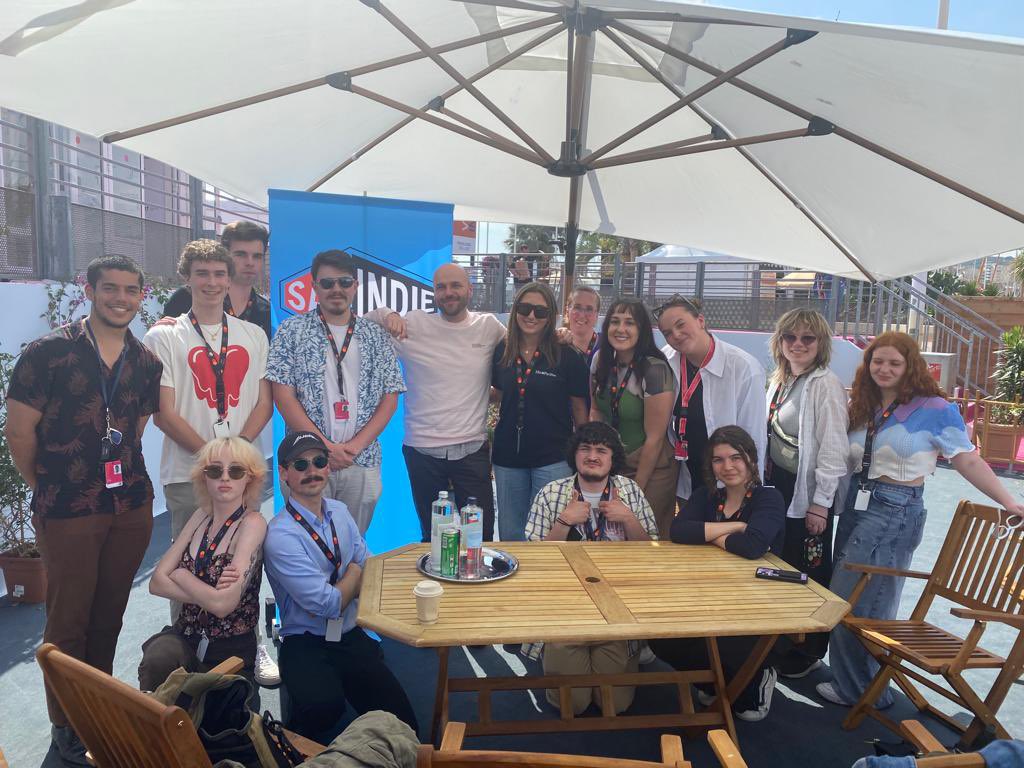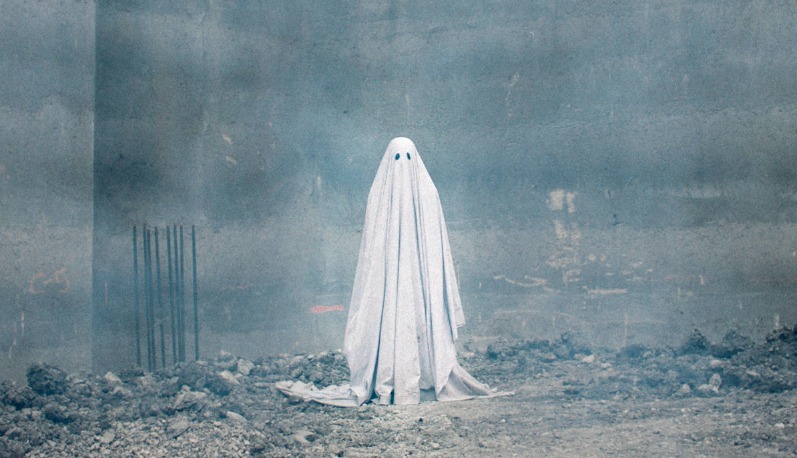When documentarian BILLY LUTHER wanted to move from unscripted to narrative filmmaking, he took inspiration from his coming-of-age as a Navajo, Hopi, and Laguna Pueblo child. Tied to those formative years was the distinct lack of Native American representation in film and television. Luther had brought Native characters to the screen in his documentary works, including 2007’s Miss Navajo, 2011’s Grab, and 2016’s Red Lake. But a feature-length narrative script would allow him to present an even wider array of people and an extremely personal story for a new audience.
FRYBREAD FACE AND ME is Luther’s narrative feature debut as a writer/director. Set in 1990, the story finds 11-year-old Benny (Keir Tallman) uprooted from his San Diego summer to stay at his grandmother’s ranch on the Navajo reservation in Arizona. There, he forms a connection with his strong-willed cousin, known (semi-affectionately) as “Frybread Face” (Charley Hogan). Frybread Face and Me stars an entire cast of Native actors, including Martin Seinsmeier, Sara H. Nataani, Kahara Hodges, and Morningstar Angeline.
Luther’s film premiered at the 2023 SXSW Film Festival before going on to screen at festivals including the Toronto International Film Festival, Mill Valley Film Festival, and American Film Festival, and as the Opening Night film of the SAGindie-sponsored Film Independent Forum 2023. ARRAY will release Frybread Face and Me on Netflix and in select US theaters on November 24.
We chatted with screenwriter/director Billy Luther about his journey bringing the film to the screen.
——
COLIN McCORMACK: To start things off, when did this idea for a script first come to you?
BILLY LUTHER: Documentaries have been my past work and I always had this story brewing inside of me that I wanted to tell. The pandemic was happening and I had these scenes here and there and I just put everything together and focused and was able to write a script from beginning to end, a complete script. I started this drive from LA back to the rez where I took the same road my parents would when they would drop me off in the summers. I went through the same route, same rest area, same gas station and I would remember these things that I had growing up. And it wasn’t until I went to the rez and my grandmother’s that I saw the land and remembered bits and pieces of my cousins and me. Then I came back to LA and started work refining it and that’s pretty much how it started.
CM: With that transition from the documentary to the narrative side, did you feel like you were starting from scratch again?
BL: It was a jump. A lot of people were like, “How are you going to transition?” But when I went on set, we were so low-budget that it just felt like a documentary [laughs]. I didn’t stress out because I had that mentality of documentary running and gunning. These kids [Tallman and Hogan] were 11 and 12 and you have such limited time with them so we couldn’t slack. I think that’s where my documentary experience came into play, as well as filming the grandmother. [Nataani] wasn’t an actress and I just told the camera crew, “Let’s be in her world. Let’s film her without having her act.” And if you watch the film you’ll see there’s a slight difference between her performance and the way we framed her and moved with her than there is with the other actors. My V.O. wasn’t part of the script and I had to tap in to go deeper into the story of Benny, which is my story. I had to dive into the V.O. and write personally. My grandmother was such a strong, important figure in my life that I needed to have this deeper understanding of who Benny was in connection to his grandmother. So I feel that the V.O. is documentary-ish.
CM: Was the crew that you were working with from the documentary world as well?
BL: My editor Fred Koschman, his only experience in editing was documentaries, so I think that’s the only person. Everybody else has worked in television or film narrative.
CM: How did you end up getting the script into the hands of your producer Chad Burris?
BL: I’ve known Chad for a very long time. He’d been producing Sterlin Harjo’s features and I think he was in a slight semi-retirement phase. Just frustrated, I think, with the indie film world for a while and I pulled him out [laughs]. I said, “Hey, read this script.” And a month later he was like, “Let’s do this.” I didn’t hear from him for a while and I was like, “Oh gosh,” but he jumped on and he really took the reins of what a producer does. He was able to get the financing pretty quickly and he’s such an incredible — I hate to say Native producer — but he just understands the nuance and storytelling of Indigenous filmmakers. So it was a good partnership.

CM: Could you talk about assembling the cast?
BL: Angelique Midthunder of Midthunder Casting is incredible. She also cast Reservation Dogs so she had [knowledge of] a lot of kids because of the audition process for Rez Dogs so we had a good jumpstart. Charley Hogan, who plays Frybread Face, was the first person that we cast. We saw her audition and were like, “That’s her.” Same as with Keir. For the character of Benny, we really wanted to find the right kid and we didn’t find him until probably three weeks before we started filming. It was a challenge because we cast and auditioned all through Zoom and rehearsed through Zoom because of the pandemic. It was tough because I couldn’t see the chemistry. I could see it on Zoom but it was a crapshoot being on set and hoping that they had physical chemistry. Martin Seinsmeier, who plays Marvin, and his wife Kahara Hodges, who plays Aunt Lucy, I wrote those characters with them in mind because I wanted to see Martin play a different role than I’ve seen him play before. He dove into it because he said, “I know this uncle. I had this uncle.” It was pretty cool. Everybody went back into their rez phase and it was really special. And Grandmother too, we were so lucky to find her.
CM: Once everyone got to location, was there any time for a sort of quick on-the-ground rehearsal?
BL: We had to hit the ground running because we just didn’t have the finances. We were so low budget that it was two days just going over lines because they were still building the set as we got there. It was magic how it all came together. That first scene that we started filming felt so special and every scene that we did was just pure from the heart and everybody gave their all. Like I said, it just felt like we were on Grandma’s ranch.
CM: Did you have to come in with a pre-determined plan of how you wanted to approach directing kids? Or did you find [the process] organically?
BL: Taika [Waititi], who’s the EP on the film, read the script early on and helped during my pre-production. And just the day before I started filming — because I think he was filming Thor at the time — he called me [about] the kids. Because he has so many great performances from kids in his films like Jojo Rabbit and Boy and Hunt for the Wilderpeople, he just told me, “Throw out the idea of the character that you created. You’re going to have this moment when you get on set where you’re going be like, ‘This is how I want you to portray this character,’” and that’s how my mind was going into it. [He said,] “But just let the kids take the role and let them go with it. Don’t sit down and say, ‘This is the backstory,’ because kids don’t understand backstory.” I went with that and Charley and Keir really took off and they played off of each other very naturally and it was different from my script. That helped me and I think was a relief, that advice that was given to me.
CM: Obviously, the location plays a big part in the film. How did you end up securing that location and what was perfect about it?
BL: The Navajo Nation at the time was closed off because of COVID. The Navajo had really high numbers so they closed off all filming and even visiting the rez from anybody who wasn’t from the community. So we found this amazing piece of land in Santa Fe, [New Mexico]. We were looking around but this [land] in particular just felt good. I looked around and I was like, Okay, we can film a whole 360 around and see wherever you move the camera. Whereas everywhere else was like, Okay, there are power lines here, we can’t shoot there. I wanted to have that freedom. The art team built everything from scratch. Nothing was there. We brought in the trailer, we built the hogan and the corral, and really made it feel like Grandma’s ranch. I think that’s what helped the characters too was making the space and the set feel real and authentic. Everyone felt like they were going home.
CM: How long was the shoot?
BL: About 28 days. We had to close down a couple of times because of COVID.
CM: Was there a particularly hectic or exciting day of production that stands out?
BL: We shot during monsoon season. On the news, their weather forecast would be no rain and there would be no clouds in the sky and then it would be a downpour for 30 to 45 minutes. You just never knew. We were filming the First Laugh Ceremony and all the women were in velvet regalia and traditional clothing and it just started downpouring. We all had to go into the trailer and wait. But, you know, rain is a blessing and I think that moment stood out to me. Then the sun came out and we filmed it and that baby laughed after we cut. It was a special moment.
CM: I’d love to know about the score and the balance between embracing traditional sounds or instruments versus when to avoid certain sounds or instruments.
BL: The sound we wanted to create was from the late-‘80s, early-‘90s. The film is set in 1990 and I wanted to play on that innocence and wonder but also bring the contemporary to the reservation. This is Benny’s story so I wanted it to be like an outsider, not the music or score you would think you would hear being on a reservation. So I just brought this playfulness. Ryan Beveridge, who did the score, I worked with him to have simplistic qualities to it but also not go too far in terms of the “Nativeness” of it. You know, no screeching hawks, no flutes. I wanted to have fun and be playful, especially when Benny and Frybread Face were together.
CM: What’s next for you in your career?
BL: I’m currently writing and directing on Dark Winds, the AMC show with Zahn McClarnon. We’re going into season three. Also, I am developing my first documentary Miss Navajo into a narrative feature, so I’m writing that script as we speak. I’m excited.
__
A big thanks to Billy for discussing FRYBREAD FACE AND ME. Learn more about the film at ARRAY’s website.
This interview has been edited for clarity.
If you’re an independent filmmaker or know of an independent film-related topic we should write about, email blogadmin@sagindie.org for consideration.





